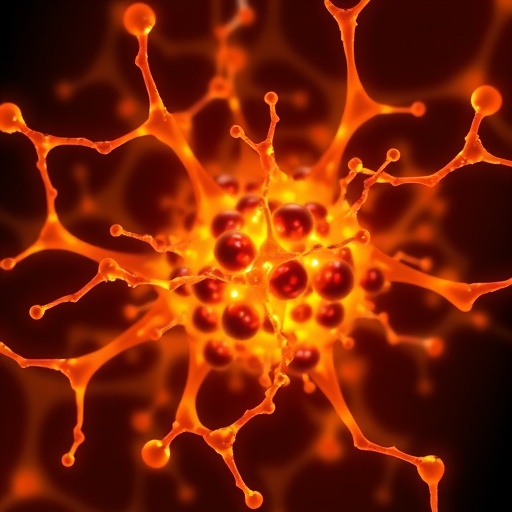Researchers at The University of Texas at Arlington (UTA) are embarking on an innovative study that aims to address the grave implications of blast injuries sustained by military personnel. The undertaking, led by Zui Pan, a distinguished professor of graduate nursing at UTA, is positioned as a potential breakthrough in combat medicine. This 20-month-long research initiative seeks to investigate the role of zinc in the protection and regeneration of muscle tissue that has been compromised due to trauma. With an interdisciplinary team comprising bioengineering experts Jun Liao and Yi Hong, as well as Yingjie Liu, an assistant research professor at UTA’s Bone-Muscle Research Center, the study promises to leverage advancements in material science for therapeutic purposes.
Traumatic injuries resulting from blasts can have irreversible effects on the human body. The research team’s focus will not only be on the immediate injuries caused by explosions but also on the phenomenon of secondary damage—the progressive loss of tissue that can follow the initial trauma. This secondary damage is often exacerbated by factors such as reduced blood flow, swelling, and infection, which further complicate the recovery process. Through their research, the team aims to develop measures that can minimize these harmful outcomes, ultimately leading to improved health and recovery for affected soldiers.
Dr. Pan emphasizes the complexities involved in treating these type of injuries. In situations where immediate intervention is necessary, medical professionals may resort to employing tourniquets or bandages to halt bleeding in the affected area. While these life-saving measures are crucial, they lead to a condition known as ischemia, where blood flow is entirely restricted. The subsequent removal of these interventions often results in reperfusion, during which blood rushes back into the area, bringing with it oxygen necessary for healing. However, this rush can ironically cause further damage to already traumatized tissues.
Through this study, the research team is investigating how zinc could play a pivotal role in protecting against this reperfusion injury. Preliminary findings in the field of muscle regeneration have shown zinc to be an essential element that facilitates tissue repair. However, the researchers stress that the administration of zinc must be carefully controlled, as excessive amounts can lead to toxicity, compounding the damage rather than alleviating it.
To assess the efficacy of zinc in mitigating muscle damage following explosive trauma, UTA researchers will introduce a zinc-infused gel, specifically gelatin methacryloyl—a substance already recognized by the FDA for its safety in medical applications. This innovative material will serve as a delivery mechanism, allowing researchers to evaluate how effectively zinc can promote muscle regeneration in a controlled laboratory setting.
The implications of this research extend far beyond military applications, however, as the methodologies and insights gained could have significant ramifications for civilian patients as well. Blast injuries have predominantly affected service members, particularly in the context of recent military engagements in Iraq and Afghanistan. According to a 2016 Department of Veterans Affairs report, approximately 74% of combat injuries recorded between the years 2001 and 2011 were the result of explosions. The need for effective regeneration strategies for such injuries is pressing.
Nevertheless, this research also holds the potential to aid civilians confronted with severe injuries resulting from vehicular accidents, trauma incurred in sports, or natural disasters such as earthquakes. The strategies developed through this study could offer new avenues for rehabilitation, making a tangible difference in countless lives.
The ultimate aspiration of Dr. Pan and her multidisciplinary team is to devise a safe and practical method for delivering zinc directly to muscle tissue that has sustained damage due to ischemia and subsequent reperfusion injury. By honing in on targeted interventions, the team aims not only to protect skeletal muscle but also to foster its natural capacity for regeneration, thereby accelerating recovery times for both military and civilian patients alike.
This groundbreaking study is situated within the broader framework of the University of Texas System’s Trauma Research and Combat Casualty Care Collaborative (TRC4). Established to address urgent needs in trauma care, the initiative emphasizes the improvement of medical responses on both the battlefield and in civilian settings. This collaborative environment offers a fertile ground for innovative research that holds the potential to transform trauma management practices.
As the study progresses, it will be essential to meticulously document and analyze the outcomes associated with zinc administration in muscle tissue. Multi-faceted approaches that combine theoretical insights with practical laboratory experiments will ensure a robust understanding of zinc’s regenerative properties and pave the way for future advancements in trauma care.
In conclusion, the research being conducted at UTA is a promising venture into the realm of trauma recovery, targeting a major aspect of both military and civilian healthcare. The outcomes of this study may not only redefine treatment protocols for blast injuries but also inspire a new paradigm in how we understand and utilize essential minerals like zinc in the context of medical interventions.
The road ahead is filled with potential, and as researchers delve deeper into the properties of zinc, the hope remains that their findings will lead to significant improvements in recovery outcomes, offering a lifeline to those whose lives have been irrevocably altered by traumatic injuries.
Subject of Research: Zinc as a protective agent and muscle regenerating compound for blast injuries
Article Title: Zinc’s Role in Healing Blast Injuries: A New Frontier in Combat Medicine
News Publication Date: October 2023
Web References: University of Texas at Arlington
References: 2016 Department of Veterans Affairs report
Image Credits: UT Arlington
Keywords
Traumatic injury, Zinc, Tissue damage, Muscle damage, Bioengineering, Nursing
Tags: blast injuries in military personnelcombat medicine advancementsinnovative treatments for trauma injuriesinterdisciplinary research in bioengineeringmilitary health research projectsmuscle tissue regeneration studiesreducing tissue damage after explosionssecondary damage from blast injuriestherapeutic applications of material scienceUTA Bone-Muscle Research Center initiativesUTA research on zinc healingzinc’s role in trauma recovery





